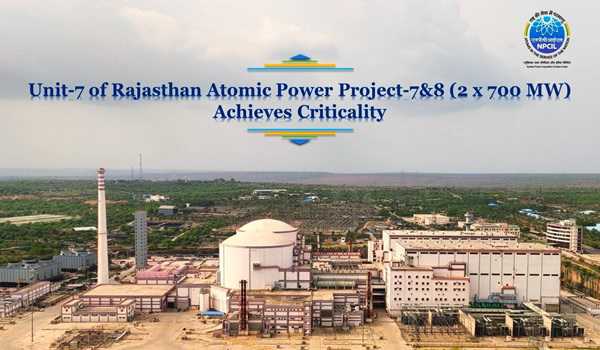SOURCE: UNI

In a significant milestone, the third indigenous Pressurised Heavy Water Reactor (PHEW)–Unit 7 of the 2×700 MW Rajasthan Atomic Power Project (RAPP-7and 8) at Rawtbhata in Rajasthan, attained criticality, marking the commencement of controlled fission chain reaction and it would be connected to the grid after conducting various tests. The Unit-7 attained criticality at 2242 hrs on Thursday night, the Nuclear Power Corporation of India Limited (NPCIL) said in a statement on Friday evening.
The milestone was attained after getting clearance for the First Approach to Criticality from the Atomic Energy Regulatory Board (AERB). RAPP-7 is the third in the series of 6 indigenous PWHR of 700 MW each, being set up in the country. The successful achievement of criticality of RAPP-7 , after the smooth operation of the first two 700 MW PHWRs–KAPS 3 AND 4 (2X700 mw) at Kakrapar in Gujarat, demonstrates the maturity achieved by NPCIL in the design, construction and operation of the indigenous PHWRs.
Criticality for the first time on the project timeline marks the completion of construction phase and commencement of the operation phase. Various experiments and tests will now be conducted before connecting it to the grid. Thereafter the power level will be raised in steps to full power in line with the AERB clearances. RSPP-7 and 8 is being set at Rawatbhata in Rajasthan where already six units with a total capacity of 1180 MW are in operation. RAPP-7 is expected to start generation this year, followed by RAPP-8 next year. NPCIL presently operates 24 reactors with a total capacity of 8180 MW and has eight units (including RAPP-7) with a capacity of 6800 MW under construction. In addition, ten more reactors with a total capacity of 7000 MW are in pre-project activities were expected to be completed progressively by 2031-32.